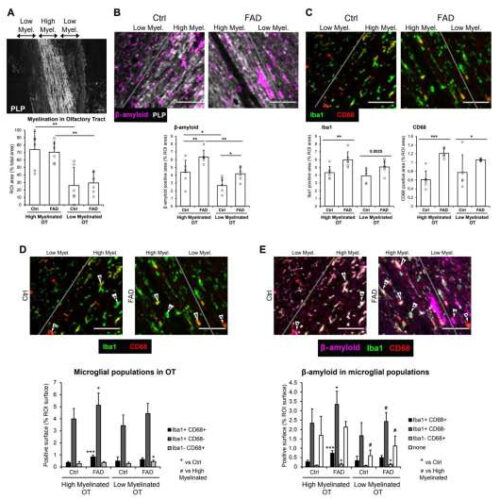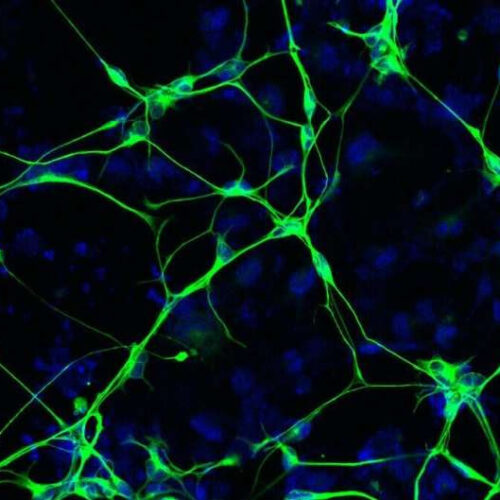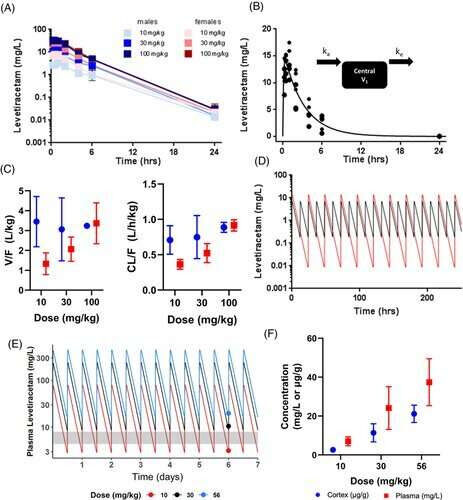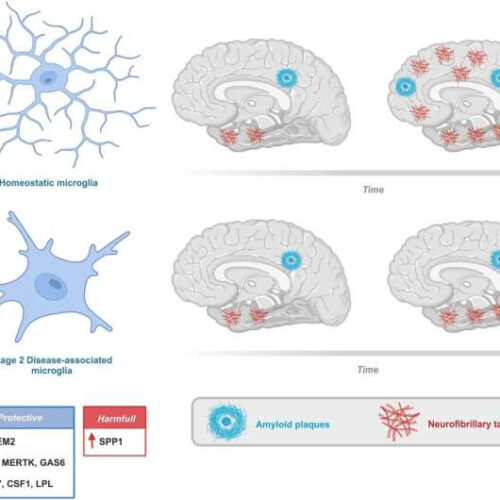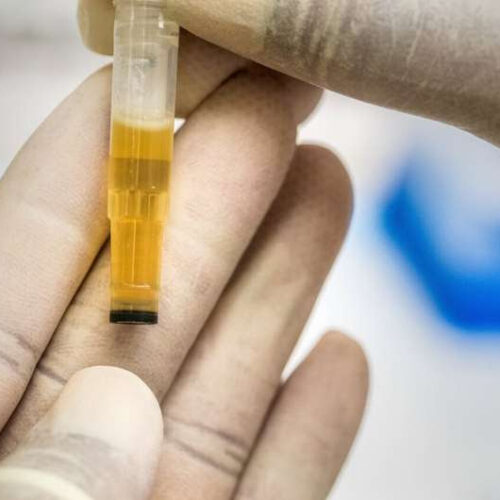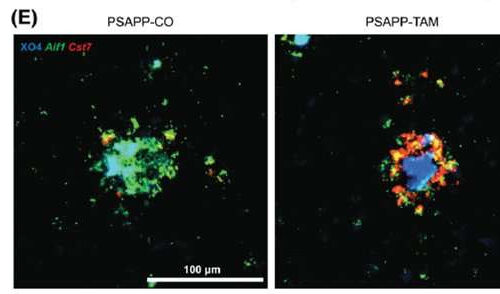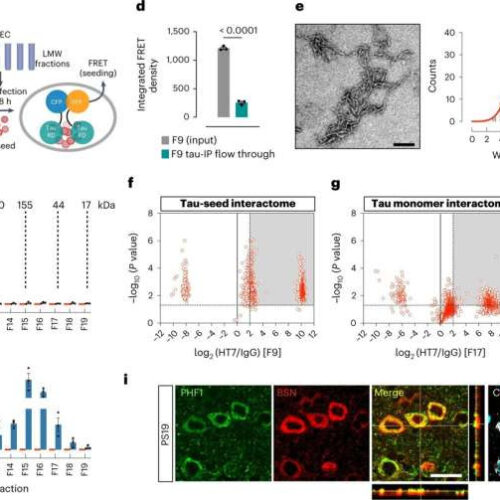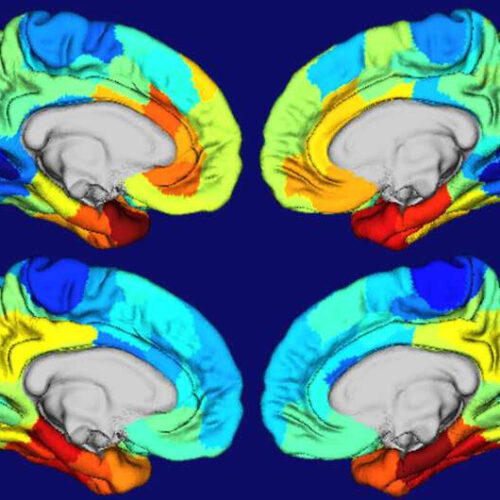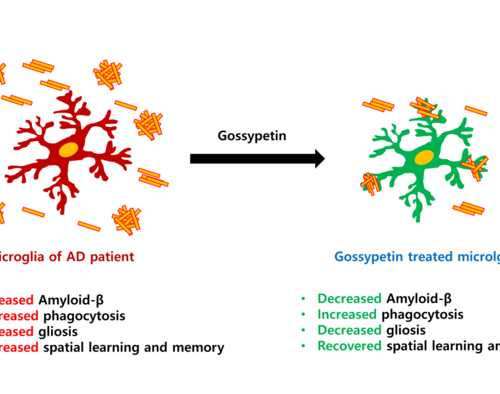by CU Anschutz Medical Campus Immunohistochemistry of the Human OT and TempO-Seq Transcriptome Analysis of the OB and OT. (A-C) IHC of the human OT for 6 control and 6 FAD subjects. (A) PLP stain was used to delimitate the high and low myelinated regions in OT. The bar graph represents the mean surface of...
Tag: <span>Alzheimer’s disease</span>
Optimal blood tests for development of new therapies of Alzheimer’s disease
UNIVERSITY OF GOTHENBURG IMAGE: NICHOLAS ASHTON, KAJ BLENNOW AND OSKAR HANSSON. CREDIT: PHOTO: UNIVERSITY OF GOTHENBURG, LUND UNIVERSITY. A new study have identified which blood tests are best at detecting Alzheimer’s disease during the earliest stages, and another blood test that is optimal for detecting relevant treatment effects. These findings will speed up the development of new...
Deteriorating neurons are source of human brain inflammation in Alzheimer’s disease
by Salk Institute Neurons (green) derived from a patient with Alzheimer’s disease. The nuclei (blue) of the neurons are also shown. Credit: Salk Institute Despite decades of research, Alzheimer’s disease remains a debilitating and eventually fatal dementia with no effective treatment options. More than 95 percent of Alzheimer’s disease cases have no known origin. Now,...
Researchers study relationship between epilepsy drug and Alzheimer’s disease
by Indiana University School of Medicine Pharmacokinetic analysis of levetiracetam (LEV) in 6-month aged 5XFAD mice reveals significant sex differences. A, Plasma concentration time profiles of LEV by dose and sex in 5XFAD males and females. B, One-compartment model fit for the 30 mg/kg dose. C, Volume of distribution (V/F) and clearance (CL/F) is shown....
The brain’s immune cells can be triggered to slow down Alzheimer’s disease, study shows
by Lund University Visual representation of the role of microglia activation in longitudinal accumulation of amyloid and tau aggregates. When microglia are in a homeostatic state, they do not protect against the accumulation of amyloid and tau aggregates, which increase over time in individuals at risk of developing Alzheimer’s disease (AD) (a). In contrast, when...
Biomarker in urine could be the first to reveal early-stage Alzheimer’s disease
by Frontiers Credit: Unsplash/CC0 Public Domain Alzheimer’s disease can remain undetected until it is too late to treat. Large-scale screening programs could help to detect early-stage disease, but current diagnostic methods are too cumbersome and expensive. Now, a new study is the first to identify formic acid as a sensitive urinary biomarker that can reveal...
Researchers identify the role of an Alzheimer’s disease risk gene in the brain
by The Mount Sinai Hospital Cst7 (yellow) is a Plaque Induced Gene (PIG) and its expression is specific to plaques in the INPP5D knockdown mouse (right), vs an AD mouse with normal levels of INPP5D (left). Credit: Emilie Castranio, PhD, postdoctoral fellow at the Icahn School of Medicine at Mount Sinai and co-first author of...
Researchers identify protein that contributes to tau neurotoxicity in Alzheimer’s disease
by Indiana University School of Medicine A high-molecular-weight tau seed interacts with BSN protein. a, Schematic of the tau-seeding assay of SEC fractions. b, Tau-seeding activity of SEC fractions obtained from 3-month-old PS19 and WT mouse brain lysates. c, Total human tau (hTau) detected by ELISA in SEC fractions from PS19 and WT mouse brain lysates. d, Tau-seeding activity...
Study yields clues as to why Alzheimer’s disease damages certain parts of the brain
by Washington University School of Medicine Red and orange areas on these heat maps of human brains show where the gene APOE is most active (top two brain images) and where tangles of the protein tau are most concentrated (bottom two brain images). APOE is the biggest genetic risk factor for Alzheimer’s, and tau tangles...
Gossypetin found in hibiscus may beat Alzheimer’s disease
POHANG UNIVERSITY OF SCIENCE & TECHNOLOGY (POSTECH) IMAGE: GOSSYPETIN ADMINISTRATION AND THE SUBSEQUENT CHANGES IN THE BRAIN TISSUE AFFECTED BY ALZHEIMER’S DISEASE. CREDIT: POSTECH A Cup of ruby red hibiscus tea not only warms the body in winter but also is known to boost the immune system, control blood pressure, and reduce body weight. And...

